Last updated: August 4, 2023
Article
USS NARRAGANSETT
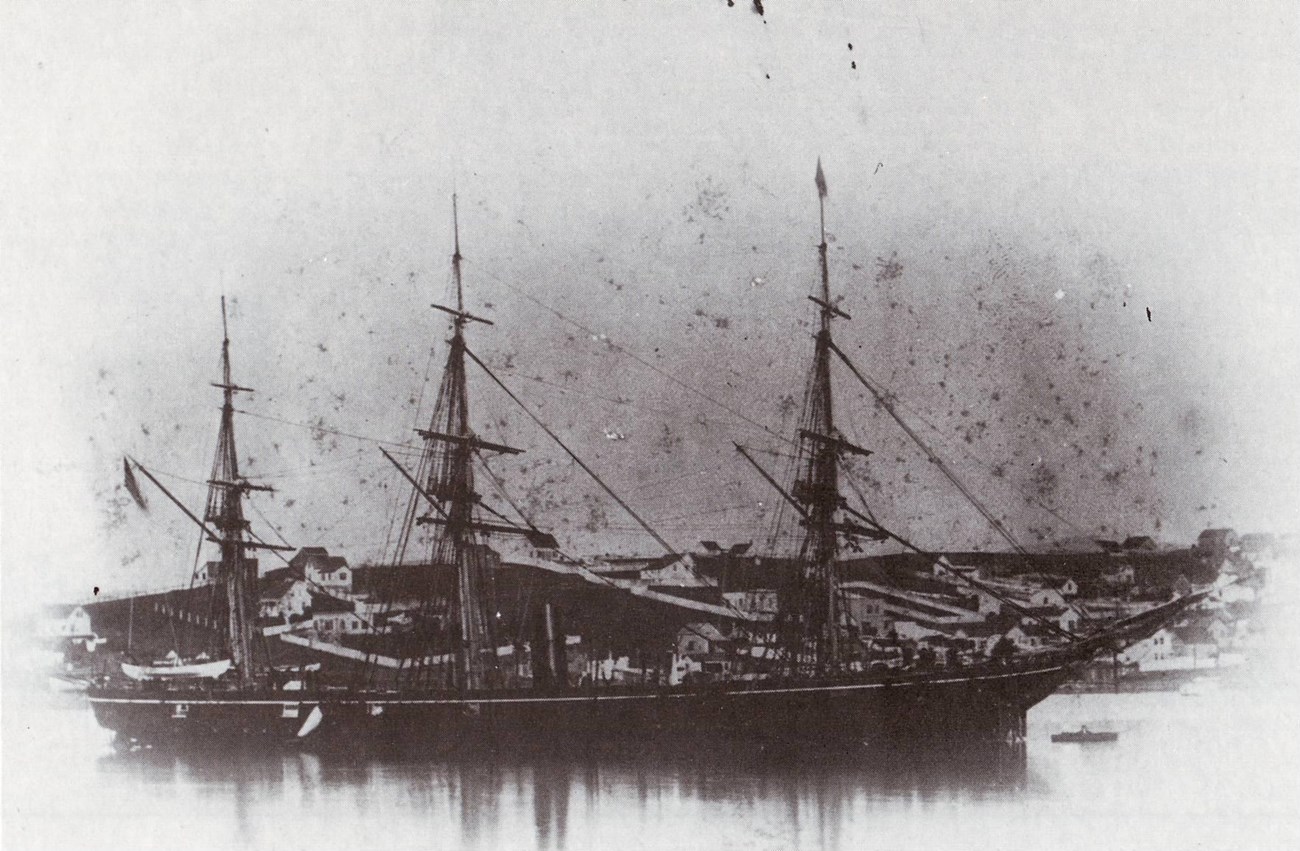
US Naval History and Heritage Command; photo from "Warships of The American Civil War Navies" by Paul H. Silverstone.
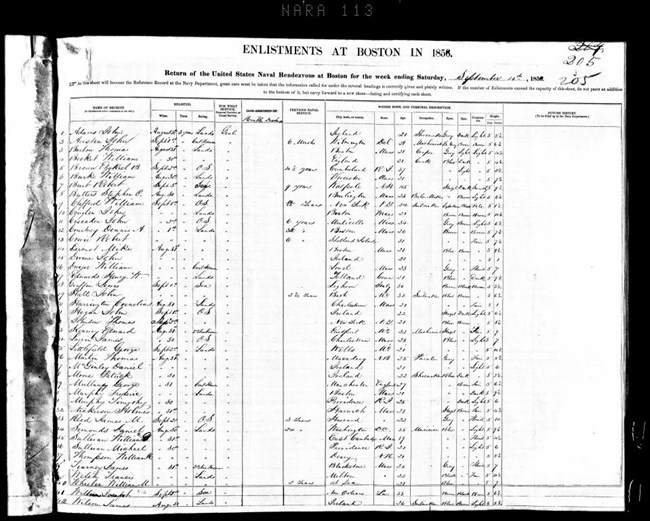
National Archives
Created and commissioned in the late 1850s alongside USS Hartford, USS Narragansett's construction was responsible for the Charlestown Navy Yard's largest employment boom since it opened in 1800. During the outbreak of the American Civil War, USS Narragansett sailed west to the still largely unknown waters of the Pacific where the ship defended off Confederate raiders. In the aftermath of the war, Narragansett gained the reputation of being a ship of exploration, sailing across the Pacific and surveying the west coast of the United States and Mexico with Commander George Dewey at the helm.
Construction at the Charlestown Navy Yard
Plans to construct USS Narragansett began in July 1858. At this time, the Charlestown Navy Yard finished construction on USS Hartford with apparent success and Congress had recently passed an act authorizing the construction of new screw sloops-of-war. Given these circumstances, the Navy selected Charlestown as the construction site of the new ship.
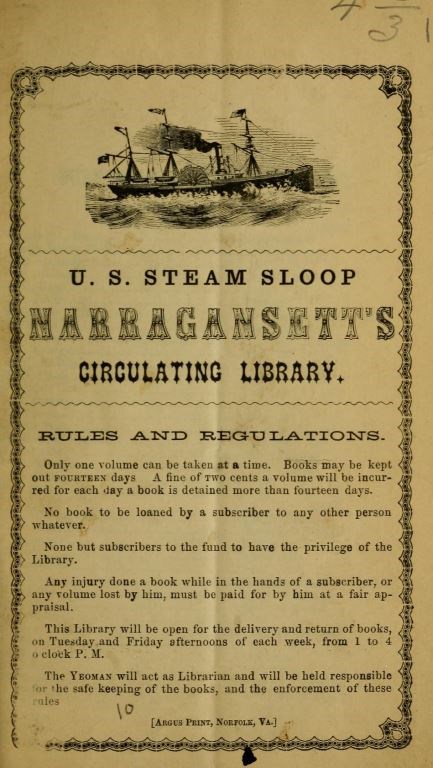
Boston Public Library
On August 3, 1858, the ship's keel was laid in Ship House No. 39. In order to complete the construction of this ship, the Navy Yard increased its workforce. By October of 1858, the yard employed more than 1500 workers, over triple the number of Navy Yard employees in 1857 before the construction of USS Hartford began. The combined projects of the Hartford and Narragansett were responsible for transforming the Navy Yard into a significant employer in the Boston area. Unfortunately, once USS Narragansett was finished, a sizable portion of workers were laid off and the Navy Yard dropped down to less than 800 workers in October 1859.
The Navy launched the seven-gun screw sloop on February 15, 1859, and commissioned it later that year on November 6, with Commodore Timothy A. Hunt in command. For a short time, Narragansett operated along the east coast, but on March 31, 1860, the ship departed for the Pacific Ocean. Sailing around South America, Narragansett reached Valparaiso, Chile, by August and remained in the Pacific for most of the Civil War.
The American Civil War – Pacific Theater
During the war, USS Narragansett joined steamers Lancaster, Saranac, and Saginaw, along with sailing sloops St. Marys and Cyane. This Pacific squadron was chiefly responsible for guarding US mail steamers from Confederate commerce raiders. USS Narragansett specifically operated in the waters of the north Pacific. Narragansett was well suited to this role because while most Confederate raider ships could outrun Narragansett, none could outgun the vessel.
USS Narragansett also had the benefit of being commanded by experienced Naval officers. Both Commander Timothy A. Hunt and First Lieutenant George H. Preble were veterans of the Mexican-American War with over forty years combined maritime experience at the start of the Civil War. Before this assignment, Lt. Preble had been working in an administrative capacity at the Charlestown Navy Yard, but his return to the sea on USS Narragansett marked the beginning of his rise to Rear Admiral.
In the aftermath of the Battle of Mobile Bay in 1864 where the United States Navy, lead by USS Hartford, crushed the remaining Confederate naval power, USS Narragansett received orders to sail back to the Atlantic. For the remainder of the war, the ship was stationed in New York.
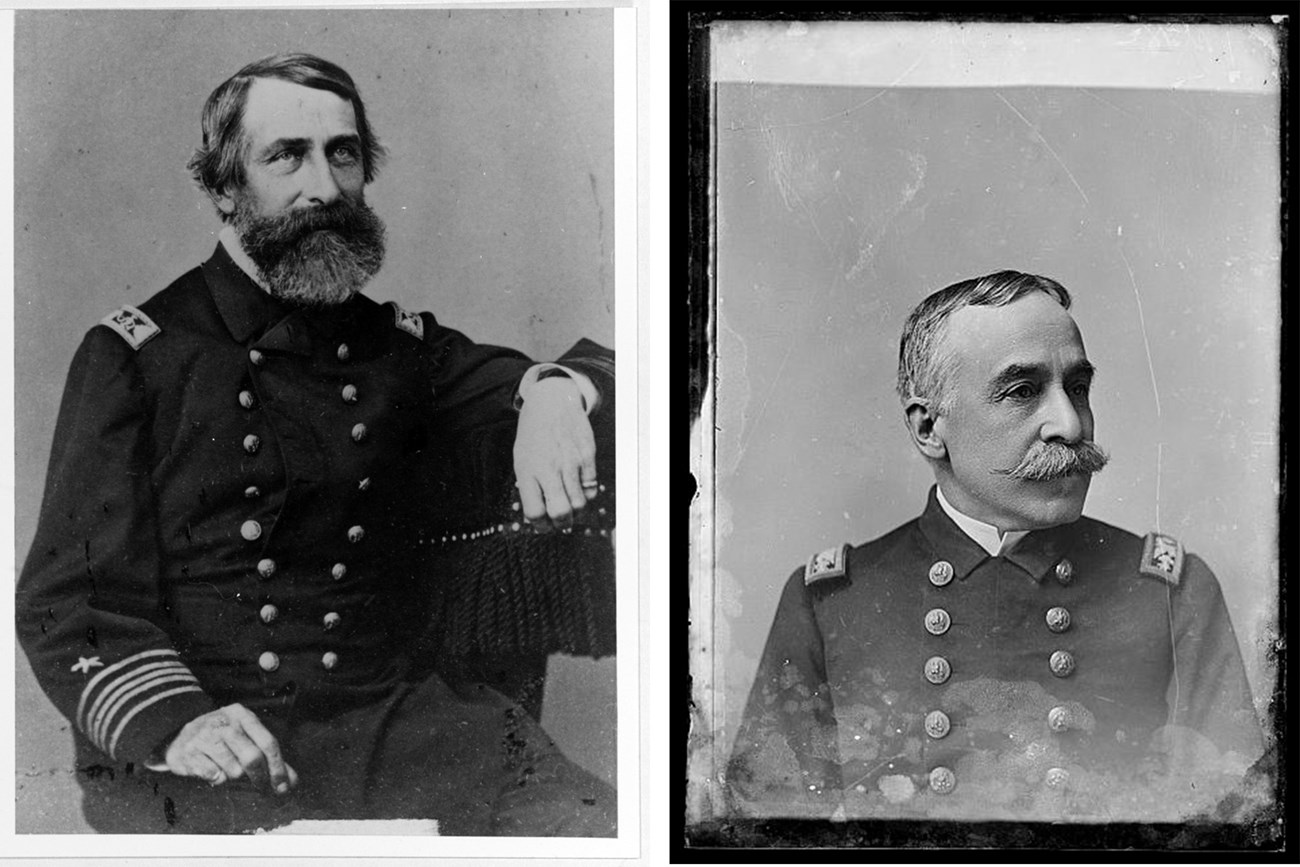
Left: Naval History and Heritage Command, NH 47226. Right: C.M. Bell Studio Collection, Library of Congress.
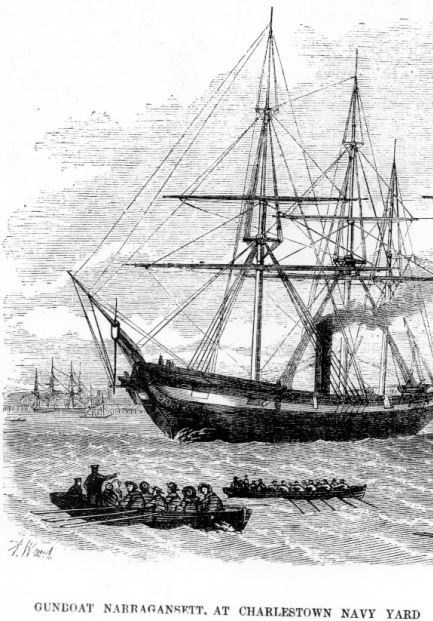
Boston National Historical Park, BOSTS-13728
Post-War Pacific Exploration
After a brief 1869 excursion to the Gulf of Mexico that resulted in a yellow fever outbreak amongst the crew, Narragansett was ordered back up north to Portsmouth, New Hampshire. Here it sat decommissioned for two years. In 1871, the crew received orders to return once more to the Pacific. For about three years Narragansett cruised the South Pacific and visited the Marshall and Samoan Islands as well as Australia.
A Special Assignment
In 1874 USS Narragansett was given its final mission to survey the Pacific coast of the United States and Mexico. Under the command of Commander George Dewey, Narragansett sailed the coastline and into the Gulf of California over the course of a year. During this time, Commander Dewey compiled detailed coast survey charts.
While on the surveying mission, a crew member of USS Narragansett received the United States' highest award, the Medal of Honor. In November 1874, Seaman Thomas Lakin witnessed two of his fellow sailors fall overboard, and he quickly jumped in after them. While in the water Lakin managed to grab both men and bring them back aboard. For saving both men from drowning Seaman Lakin was awarded the Medal of Honor.
An Uncharted Fate
In the aftermath of the Dewey survey, USS Narragansett entered Mare Island Shipyard in California where the Navy again decommissioned the ship. It remained there until November 3, 1883, when William E. Mighell of San Francisco bought Narragansett. Mighell later became the largest private owner of ships in the. Narragansett's fate after the sale is largely a mystery, but the career of this screw sloop foreshadows the United States’ emergence as a naval power in the Pacific in the coming decades. It is unlikely that the Charlestown Navy Yard workers who built USS Narragansett could have imagined the places their construction would travel, but the ship’s career serves as a testament to the craftsmanship of these builders.
Contributed by: Matthew Patrick Ahern, Student Conservation Association Historic Preservation Corps Member
Sources
Narragansett I (Screw Sloop). Naval History and Heritage Command, 2015. https://www.history.navy.mil/research/histories/ship-histories/danfs/n/narragansett-i.html
Black, Frederick R., Bearss, Edwin C., The Charlestown Navy Yard 1842-1890. Boston, Massachusetts: National Park Service, 1993.
U.S. Steam Sloop Narragansett's Circulating Library. Norfolk, Virginia: Argus Print, 1860. https://archive.org/details/ussteamsloopnarr01narr/mode/1up?ref=ol.
C.M. Bell, photographer. Dewey, Admiral George M. , ca. 1916. [Between 1873 and] Photograph. https://www.loc.gov/item/2016713101/.
United States, Naval Enlistment Rendezvous, 1855-1891. Washington D.C.: Department of the Navy, National Archives. https://catalog.archives.gov/id/2363711.
Letters Received from the Bureau of Construction and Repair, 9/10/1842 - 4/30/1908. Boston, Massachusetts, Department of the Navy, National Archives. https://catalog.archives.gov/id/1160736.
